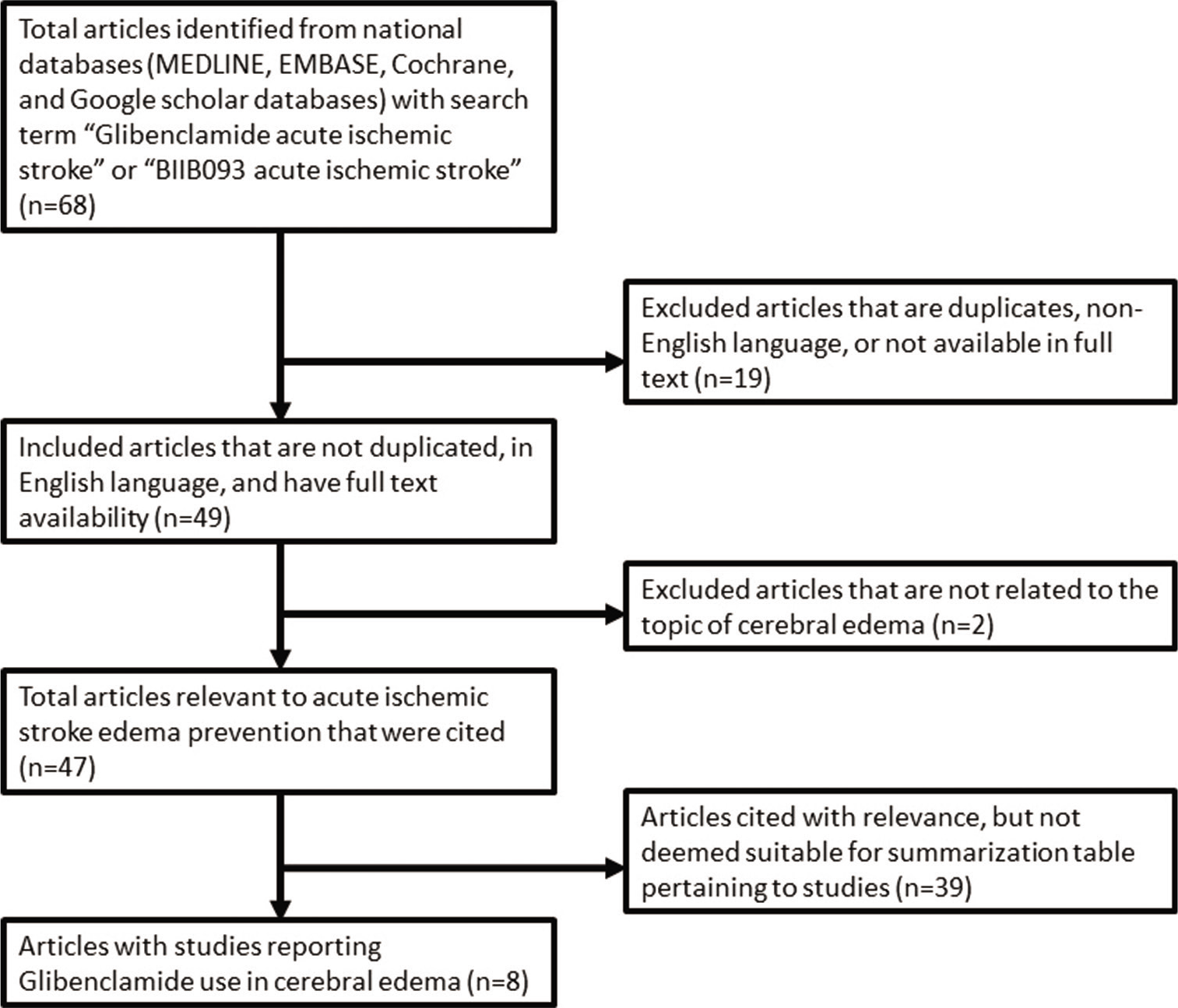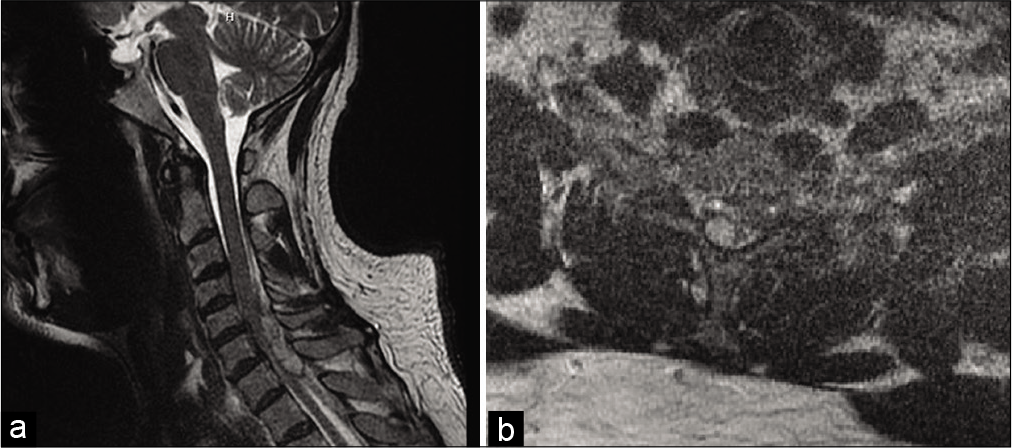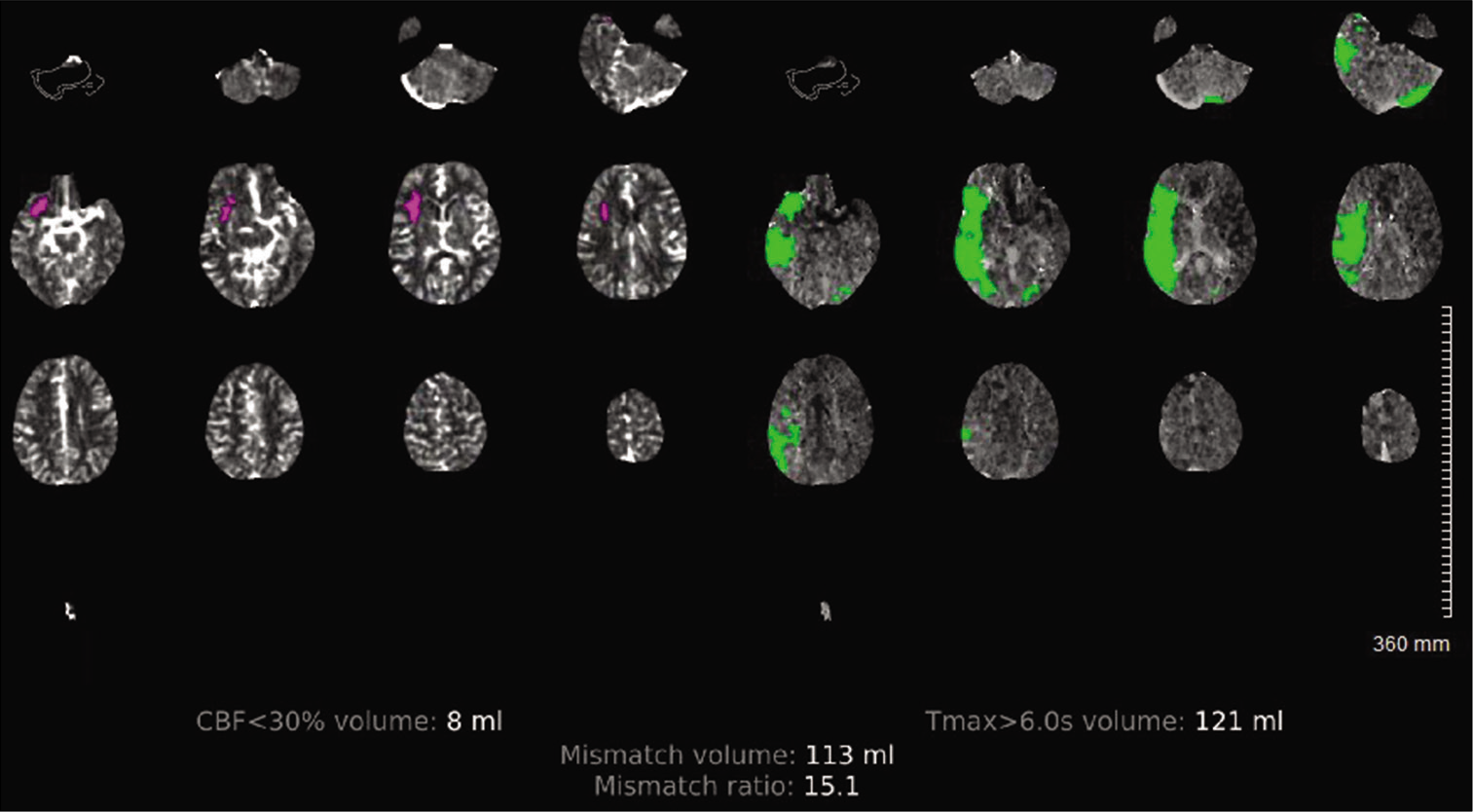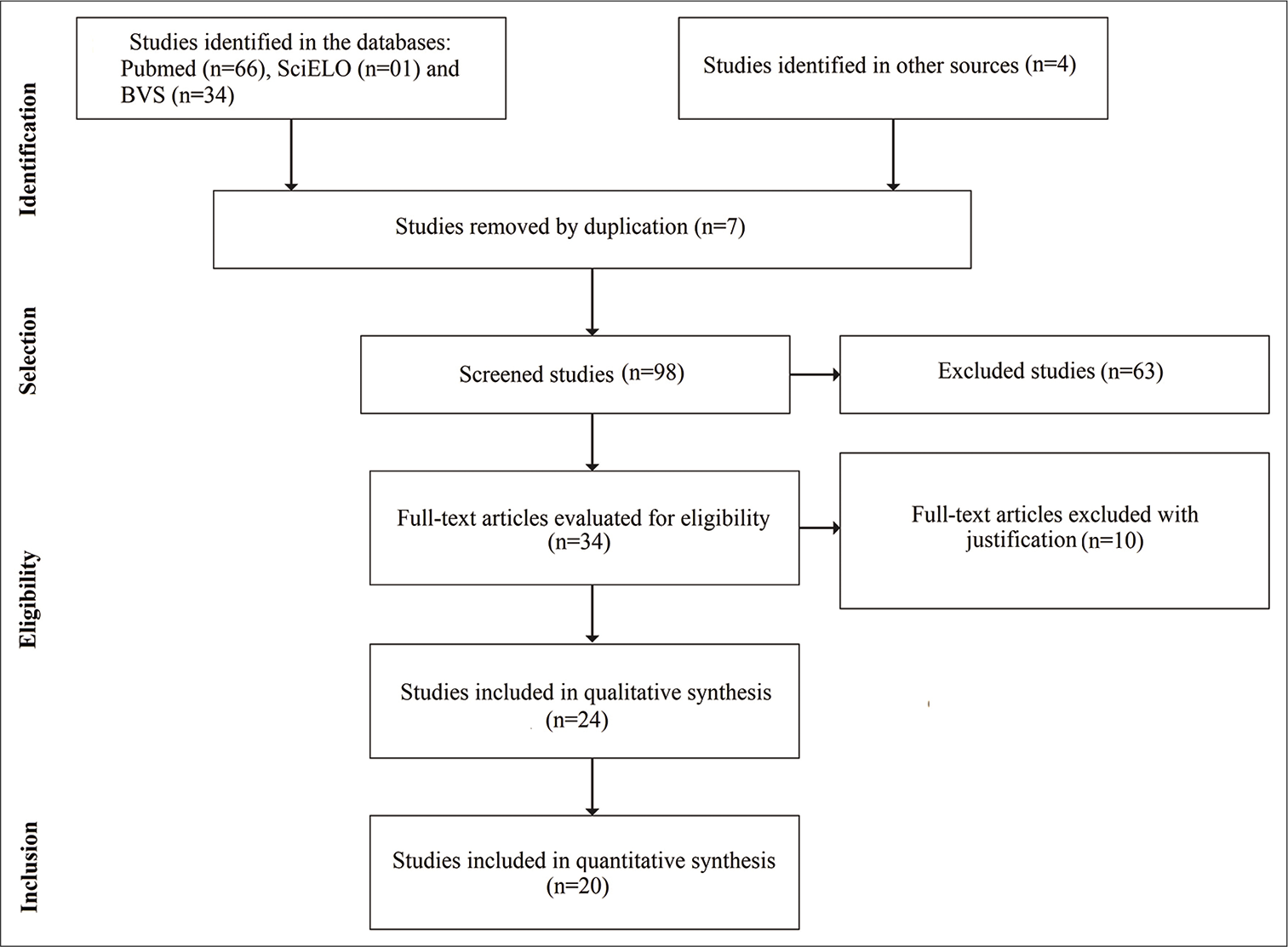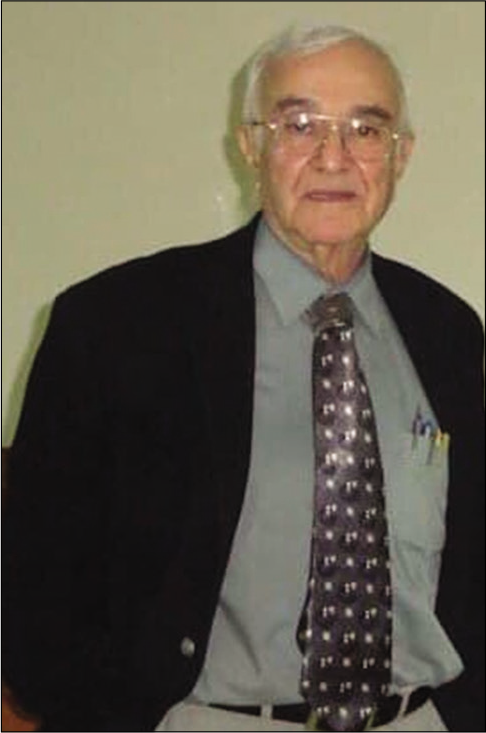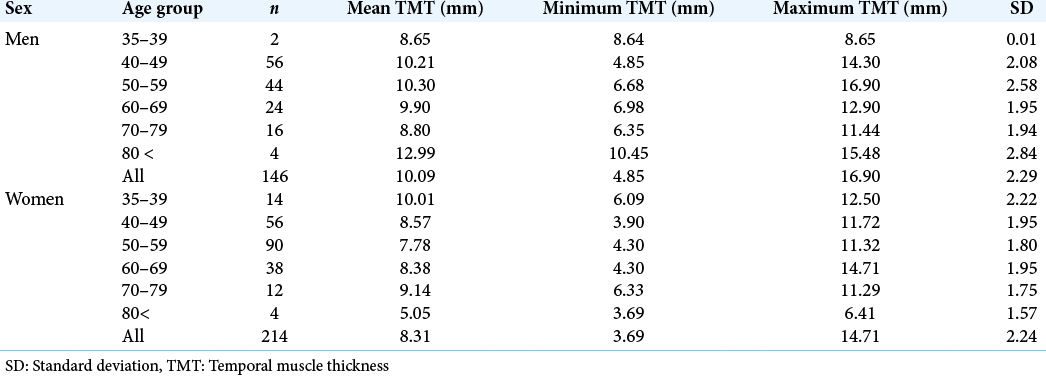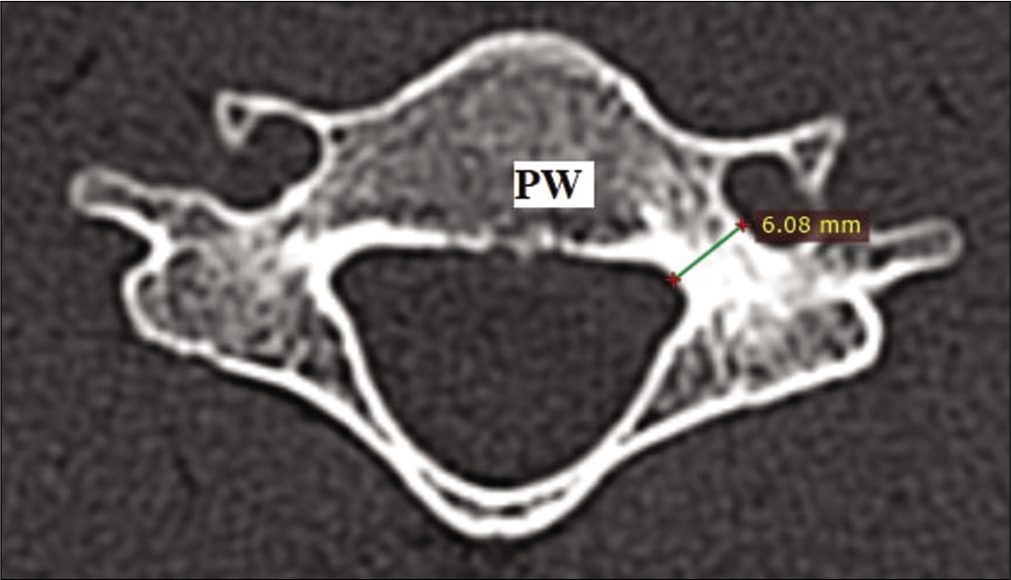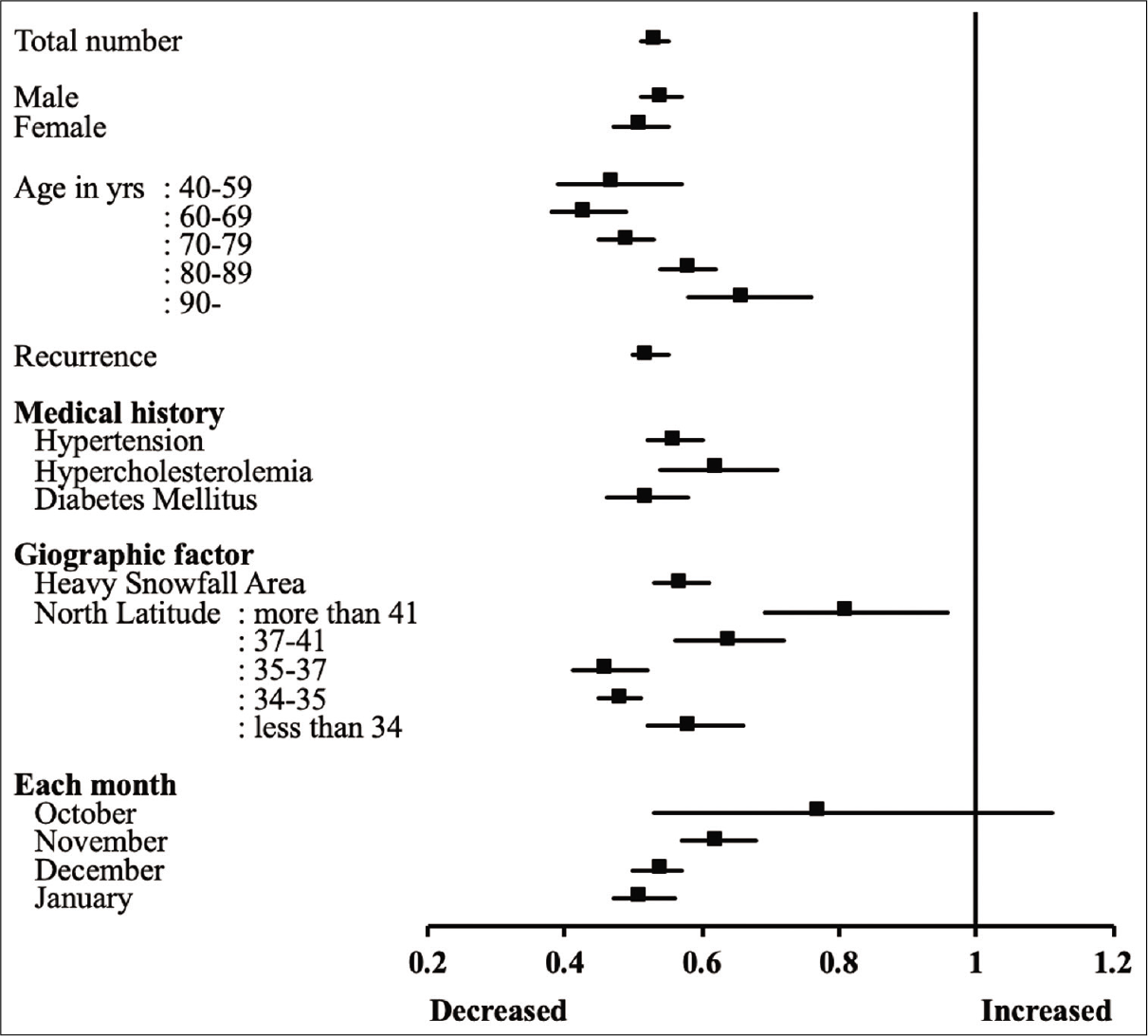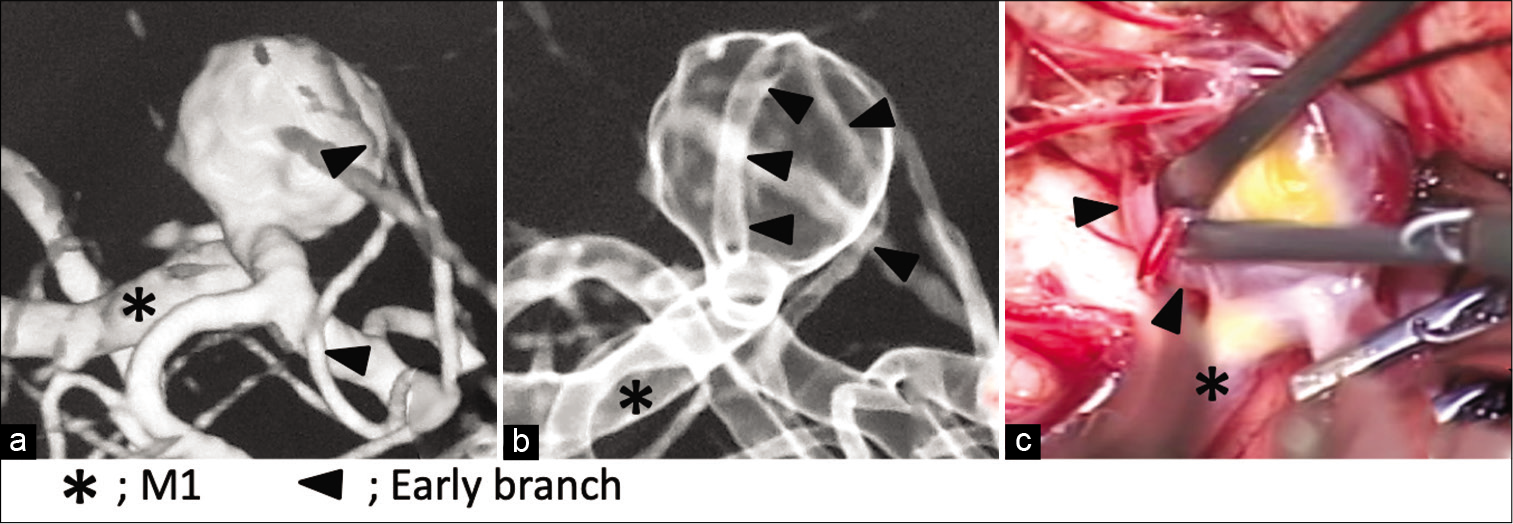BIIB093 (intravenous glibenclamide) for the prevention of severe cerebral edema
Date of publication: 02-Mar-2021
Background: Vasogenic edema in the setting of acute ischemic stroke can be attributed to the opening of transient receptor potential 4 channels, which are expressed in the setting of injury and regulated by sulfonylurea receptor 1 (SUR1) proteins. Glibenclamide, also known as glyburide, RP-1127, Cirara, and BIIB093, is a second-generation sulfonylurea that binds SUR1 at potassium channels and may significantly reduce cerebral edema following stroke, as evidenced by recent clinical trials. This review provides a comprehensive analysis of clinical considerations of glibenclamide use and current patient outcomes when administered in the setting of acute ischemic stroke to reduce severe edema.
Spontaneous cervical epidural hematoma: Insight into this occurrence with case examples
Date of publication: 02-Mar-2021
Background: First characterized in the 19th century, spontaneous spinal epidural hematoma (SSEH) is known as the idiopathic accumulation of blood within the spinal canal’s epidural space, causing symptoms varying from general back pain to complete paraplegia. With varying etiologies, a broad spectrum of severity and symptoms, a time-dependent resolution period, and no documented diagnosis or treatment algorithm, SSEH is a commonly misunderstood condition associated with increasing morbidity. While SSEH can occur at any vertebrae level, 16% of all SSEH cases occur in the cervical spine, making it a region of interest to clinicians.
Cerebral fat embolism in the absence of a long bone fracture: A rare case report
Date of publication: 02-Mar-2021
Background: The classic triad of fat embolism syndrome consists of pulmonary distress, mental status change, and petechial rash. Typically, symptoms manifest 24–48 hours after a long bone fracture, but case reports have demonstrated fat embolism syndrome without long bone fracture. These cases are initiated by a stress response, mobilizing free fatty acids into the circulation.
Evidence-based practice of stereotactic radiosurgery: Outcomes from an educational course for neurosurgery and radiation oncology residents
Date of publication: 02-Mar-2021
Background: As the field of brain and spine stereotactic radiosurgery (SRS) continues to grow, so will the need for a comprehensive evidence base. However, it is unclear to what degree trainees feel properly equipped to use SRS. We assess the perceptions and comfort level reported by neurosurgery and radiation oncology residents concerning the evidence-based practice of SRS.
Female insertion in neurosurgery: Evolution of a stigma break
Date of publication: 02-Mar-2021
Background: Utilizing the Brazilian Medical Demography analysis and a literature review, we evaluated how women choose to become neurosurgeons in Brazil and around the world, specifically citing the Europe, the USA, India, and Japan.
Alwitri: The father of modern neurosurgery in Iraq
Date of publication: 23-Feb-2021
Standard values for temporal muscle thickness in the Japanese population who undergo brain check-up by magnetic resonance imaging
Date of publication: 23-Feb-2021
Background: Skeletal muscle mass is an important factor for various diseases’ outcomes. The psoas muscle cross-sectional area on the abdominal computed tomography (CT), gait speed, and handgrip strength is used to measure it. However, it is difficult to measure the neurological patients’ muscle mass or function because (1) we do not perform abdominal CT. (2) Such patients have impaired consciousness, gait disturbance, paresis, and need of rest. Temporal muscle thickness (TMT) on magnetic resonance imaging (MRI) is now attractive for skeletal muscle volume indicator, but the reference values are not established. We herein investigated the standard value of the Japanese TMT using the brain check-up database by MRI.
Computed tomographic analysis of cervical spine pedicles in the adult Indian population
Date of publication: 23-Feb-2021
Background: Cervical pedicle screw insertion is a technically demanding procedure that carries the risk of catastrophic damage to surrounding neurovascular structures. Here, we analyzed computed tomography (CT)-based three-dimensional cervical spine pedicle geometry to determine the level and sex-specific morphologic differences in the adult Indian population.
Snowfall reduces the risk of chronic subdural hematoma onset: Analysis of an administrative database in Japan
Date of publication: 23-Feb-2021
Background: Chronic subdural hematoma (CSDH) is a frequently observed disease in neurosurgical practice. Although first snowfall has been considered to increase the onset of CSDH, few reports have assessed the relationship between snowfall and CSDH. In this study, we aimed to investigate the relationship between CSDH onset and first snowfall events.
Preoperative simulation of a middle cerebral artery aneurysm clipping using a rotational three-dimensional digital subtraction angiography
Date of publication: 23-Feb-2021
Background: In recent years, young neurosurgeons have had few opportunities to gain experience with clipping surgeries. The first author was sometimes surprised that she could not predict the anatomical relationships between the aneurysm and vessels during actual surgery. This study investigated the differences between the expected and actual operative findings during clipping surgery for aneurysms of the middle cerebral artery.


